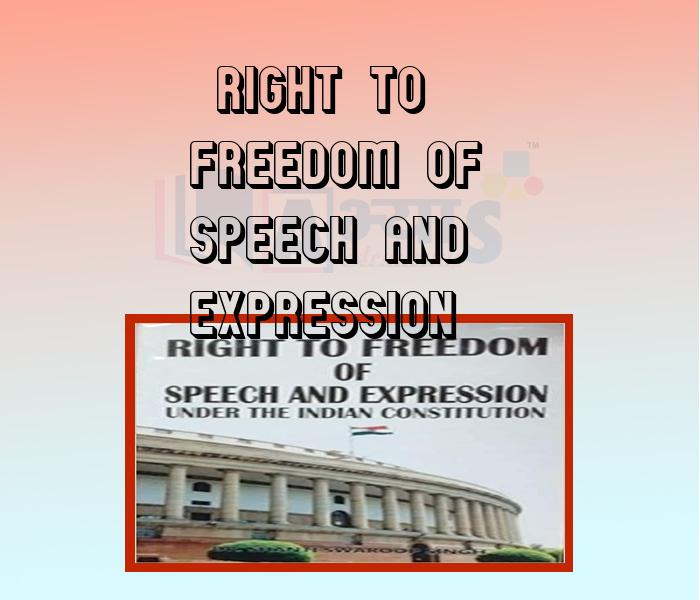Right To Freedom Of Speech And Expression










Right To Freedom Of Speech And Expression
Right To Freedom Of Speech And Expression:
The Constitution of India contains the right to freedom, given in articles 19, 20, 21 and 22, with the view of guaranteeing individual rights that were considered vital by the framers of the Constitution.
The right to freedom in Article 19 (1) guarantees the following six freedoms:
According to the Indian Constitution in which of the following right the "freedom of press" is included ? | |||
| Right Option : B | |||
| View Explanation | |||
Which of the following are correct : (a) The phrase, "freedom of press" has not been used in Article 19 of the Indian Constitution, but freedom of expression includes freedom of press. (b) Article 21(A) of the Indian Constitution made the right to primary education part of the right to freedom, stating that the State would provide free and compulsory education to children from six to fourteen years of age. (c) Freedom to assemble peacefully without arms, on which the State can impose reasonable restrictions in the interest of public order and the sovereignty and integrity of India. | |||
| Right Option : D | |||
| View Explanation | |||
Which article of the Constitution provides protection to the accused from double punishment and self - incrimination in relation to conviction ? | |||
| Right Option : D | |||
| View Explanation | |||
Students / Parents Reviews [10]
I have spent a wonderful time in Abhyas academy. It has made my reasoning more apt, English more stronger and Maths an interesting subject for me. It has given me a habbit of self studying

Yatharthi Sharma
10thMy experience with Abhyas academy is very good. I did not think that my every subject coming here will be so strong. The main thing is that the online tests had made me learn here more things.

Hiya Gupta
8thIt was a good experience with Abhyas Academy. I even faced problems in starting but slowly and steadily overcomed. Especially reasoning classes helped me a lot.

Cheshta
10thMy experience with Abhyas is very good. I have learnt many things here like vedic maths and reasoning also. Teachers here first take our doubts and then there are assignments to verify our weak points.

Shivam Rana
7thAbhyas is a complete education Institute. Here extreme care is taken by teacher with the help of regular exam. Extra classes also conducted by the institute, if the student is weak.

Om Umang
10thIt was good as the experience because as we had come here we had been improved in a such envirnment created here.Extra is taught which is beneficial for future.

Eshan Arora
8thMy experience was very good with Abhyas academy. I am studying here from 6th class and I am satisfied by its results in my life. I improved a lot here ahead of school syllabus.

Ayan Ghosh
8thAbout Abhyas metholodology the teachers are very nice and hardworking toward students.The Centre Head Mrs Anu Sethi is also a brilliant teacher.Abhyas has taught me how to overcome problems and has always taken my doubts and suppoeted me.

Shreya Shrivastava
8thOne of the best institutes to develope a child interest in studies.Provides SST and English knowledge also unlike other institutes. Teachers are co operative and friendly online tests andPPT develope practical knowledge also.

Aman Kumar Shrivastava
10thBeing a parent, I saw my daughter improvement in her studies by seeing a good result in all day to day compititive exam TMO, NSO, IEO etc and as well as studies. I have got a fruitful result from my daughter.
